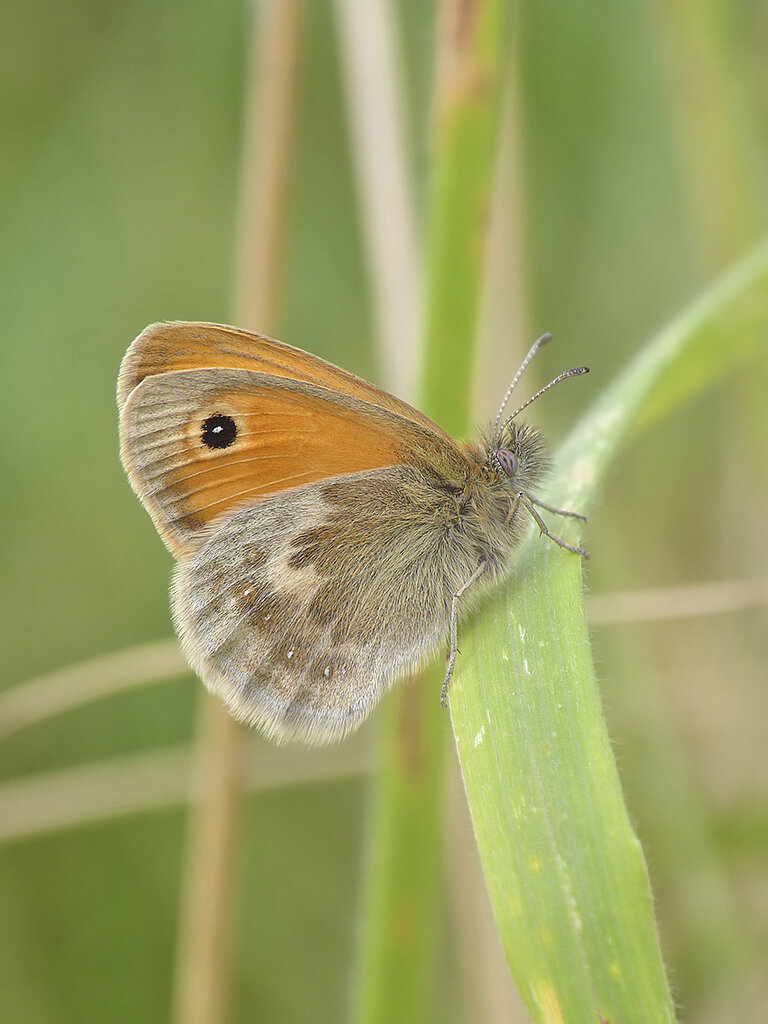
Come dine with me …
As with most insects, butterflies do the majority of their growing and eating during the larval stage. Nevertheless, the adults still require nutrition.

Genetic engineering …
European butterflies are arguably the best-studied group of invertebrates in the world. Uncovering cryptic biodiversity is essential for understanding evolutionary processes and patterns of ecosystem functioning, as well as for nature conservation.

A case of mistaken identity …
When out and about I often hear comment from inexperienced observers on the difficulty in separating the Brown Argus, Aricia agestis (Lepidoptera: Lycaenidae) from the ‘brown’ form of the female Common Blue, Polyommatus icarus (Lepidoptera: Lycaenidae) in both field and photographic situations.

Getting your eye in …
Found solitary or in small groups on the fallen male catkins of the Common Alder, Alnus glutinosa or willows, Ciboria caucus is a widespread species though one that is easily overlooked due to its small size and wet habitat.

Signs of Spring
Although widespread, Encoelia furfuracea (Helotiales: Sclerotiniaceae) is generally regarded as an uncommon find in Britain.

Sweet smell of decay …
The Common Stinkhorn, Phallus impudicus is the commonest of the British stinkhorns, with a smell that is typically detected long before the fungus is actually found.

Beauty and the beech …
Although their appearance might suggest that slime moulds are fungi, they are neither fungi nor moulds; though they often form spore-bearing structures that resemble those of true fungi.

Coeur de Sorcière
Rarely seen in Britain, the Red Cage, Clathrus ruber is a striking and unforgettable species, which was first recorded in Britain from the Isle of Wight in 1844.

A bird in the bush …
The funnel-shaped fruitbodies of Cyathus striatus are always a pleasure to find. However, although often clustered in large groups, they are easily overlooked because they are small and inconspicuous and because their habitat is typically dark, damp woodland.

Prima ballerina …
The balletic and rather beautiful Silky Rosegill is an infrequent to rare find in Britain and Ireland.

Alien invader …
The aptly named Devil’s Fingers, only rarely seen in southern Britain, is a striking species, which reached Europe from Australia or New Zealand at the start of World War I (1914). It was first recorded in Britain from Cornwall in 1946.

Selvedg'd Heath Eye (Petiver, 1717)
Despite its contemporary British vernacular name, the Small Heath is not confined to heathland and can be found in a wide range of habitats particularly those that are more open in structure, such as grassland, heathland, railway embankments, disused quarries, meadows and coastal dunes. It occurs only sparingly in woodland where it can be found in ones and twos along wide woodland rides.

It’s true, fairies do live in the woods …
The Green Long-horn, Adela reaumurella is a small day-flying micromoth belonging to the family Adelidae, the fairy longhorn moths.

Not all bees sting …
The Bee Orchid, Ophrys apifera is an attractive and perhaps one of our best known and well-loved orchids.

Nemophora degeerella
The beautiful Yellow-barred Long-horn, Nemophora degeerella is relatively common amongst woodland over much of England and Wales.

Entomological Collections
Entomological collections, indeed any collection of natural history specimens, are libraries of natural objects such as insects, mammals, birds, plants and fungi. Such items are collected and preserved because they form a rich foundation upon which to study the natural world by, for example, providing the basis for identification of organisms, mapping their distribution and providing the means for facilitating research led conservation.

Long-tailed Blue
The Long-tailed Blue Lampides boeticus, (Linnaeus, 1767) is one of the most widespread butterflies in the world, being found throughout southern Europe, Africa, southern Asia, India and Australia, extending eastwards to parts of Oceania including Hawaii. However, it is one of the rarest migrants to the British Isles.

Glanvilles Wootton and beyond ...
James Charles Dale was born at Iwerne Minster, near Blandford, Dorset, on the 13th December 1791. Born into a family of wealthy landowners he spent much of his adult life studying entomology. He was undoubtedly one of the most influential entomologists of his time, and his collections, spanning numerous insect orders, are probably the single most important and comprehensive to have ever been compiled in the British Isles.